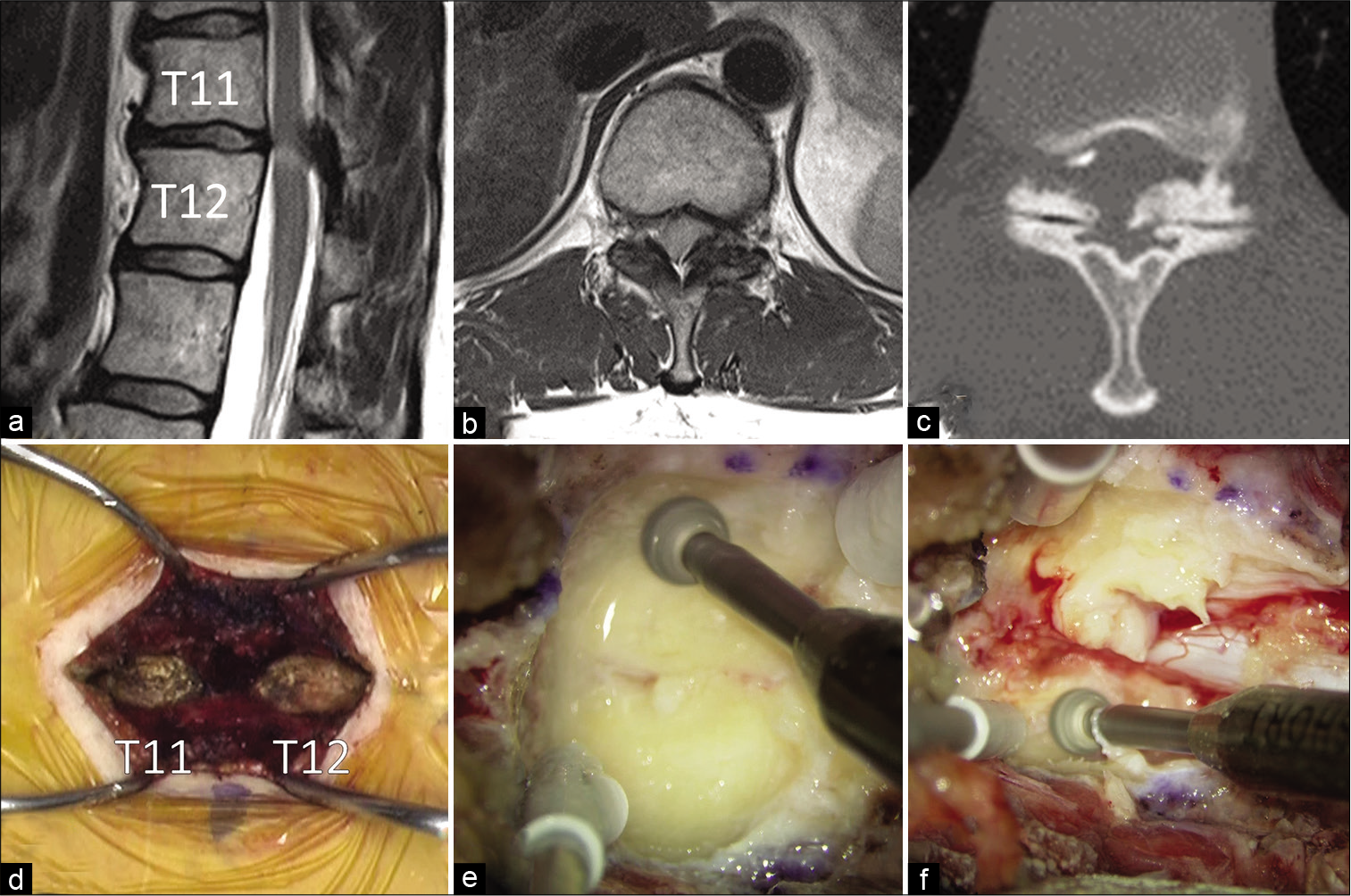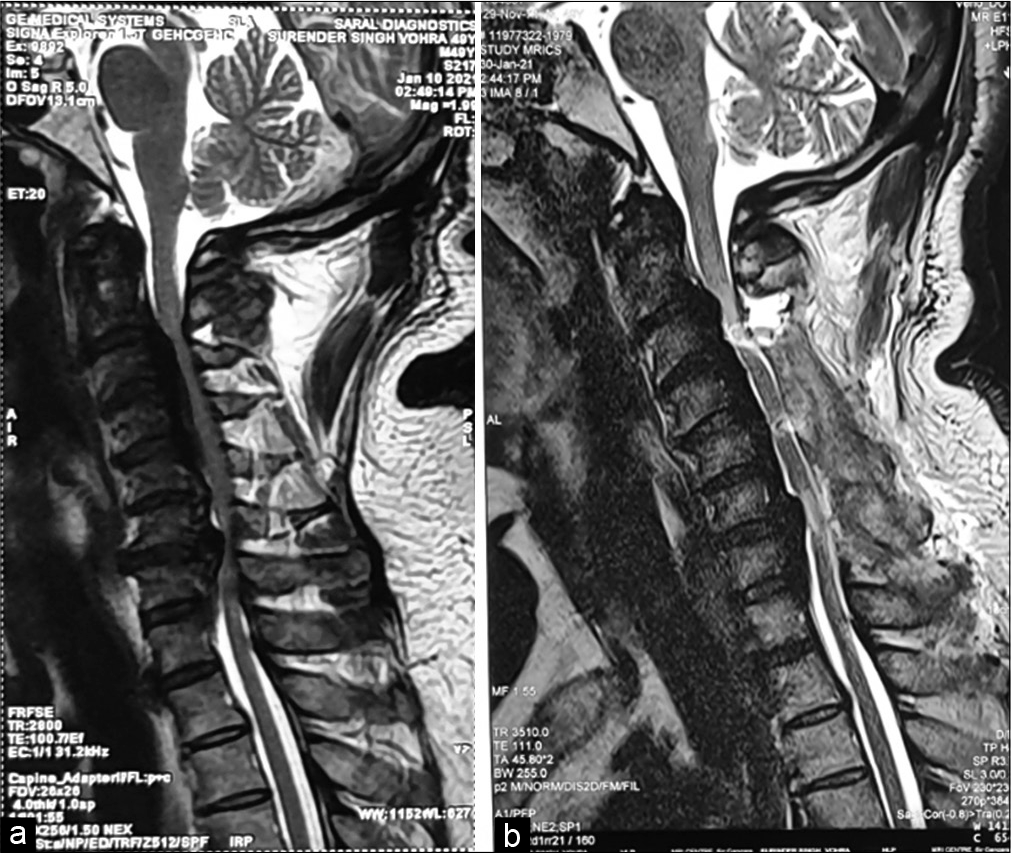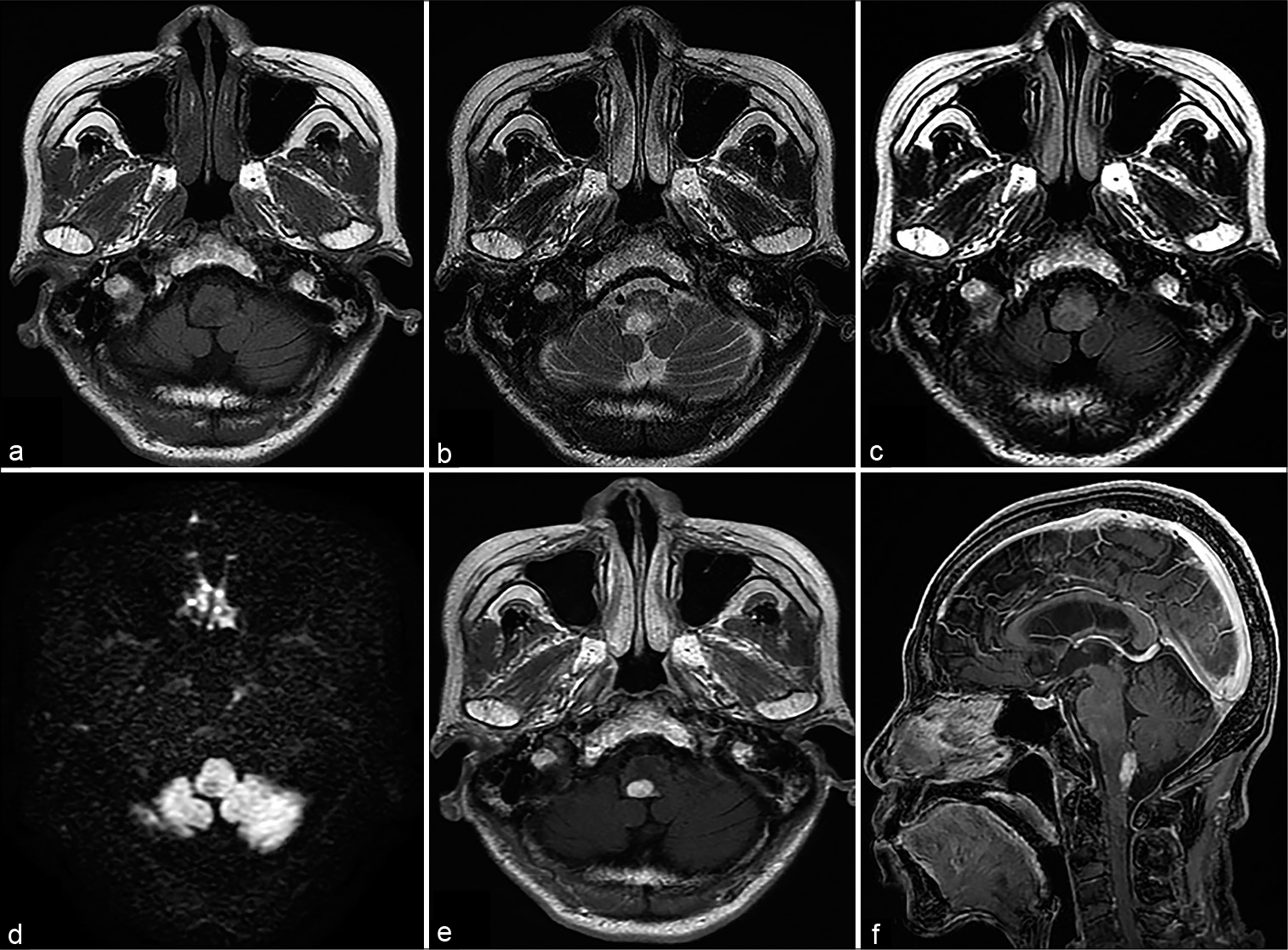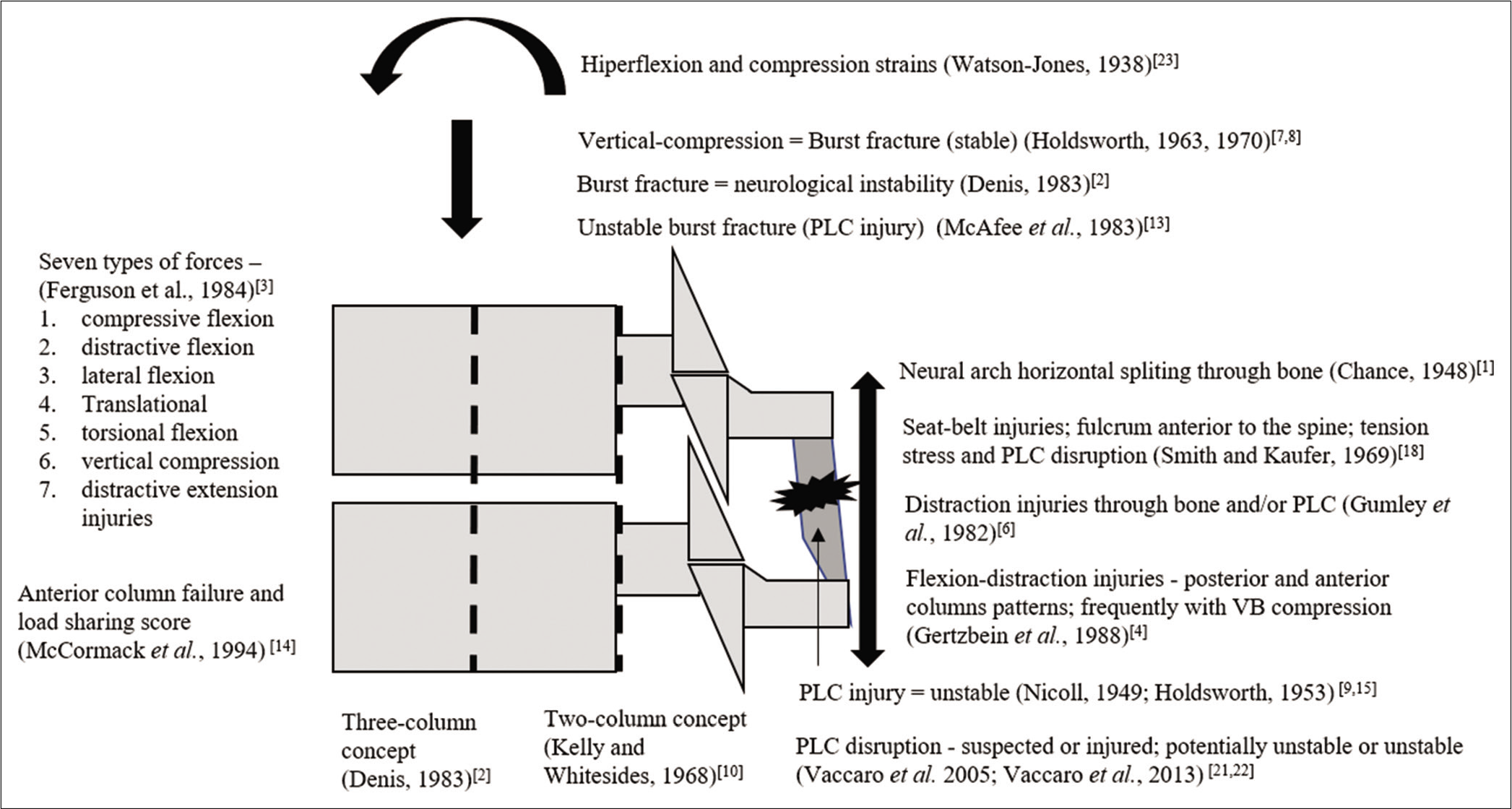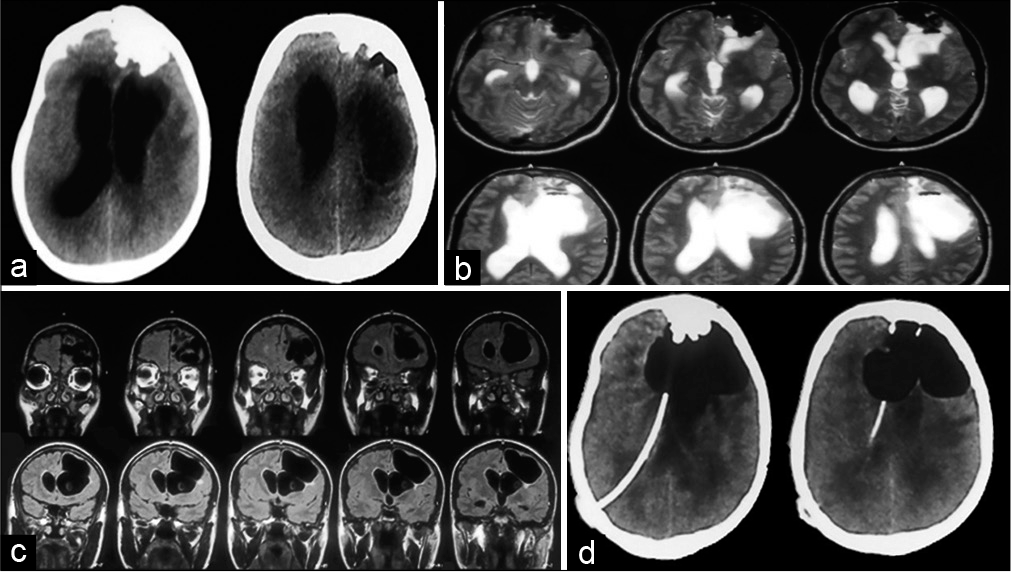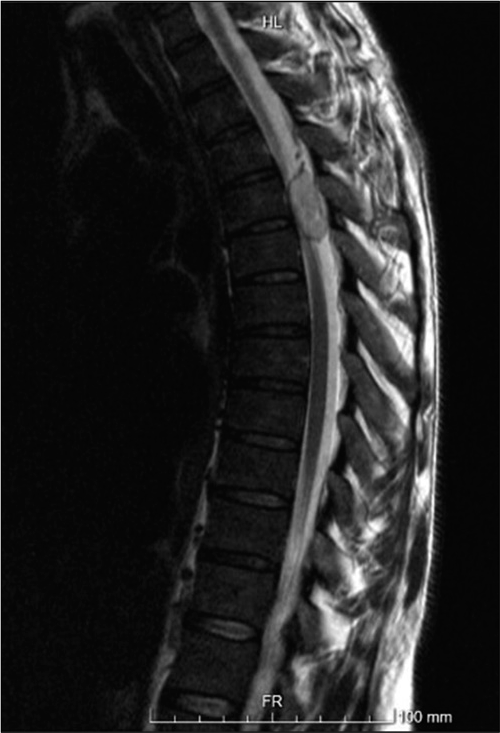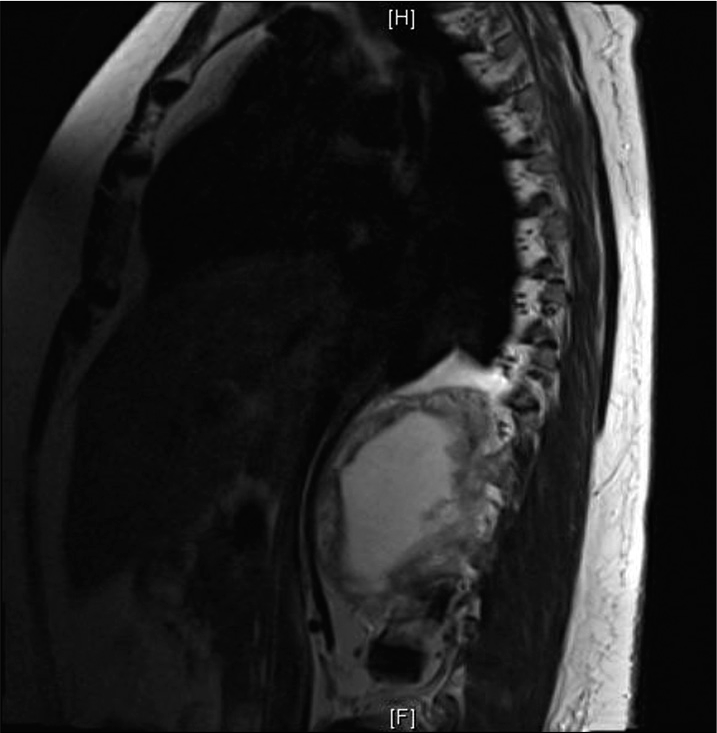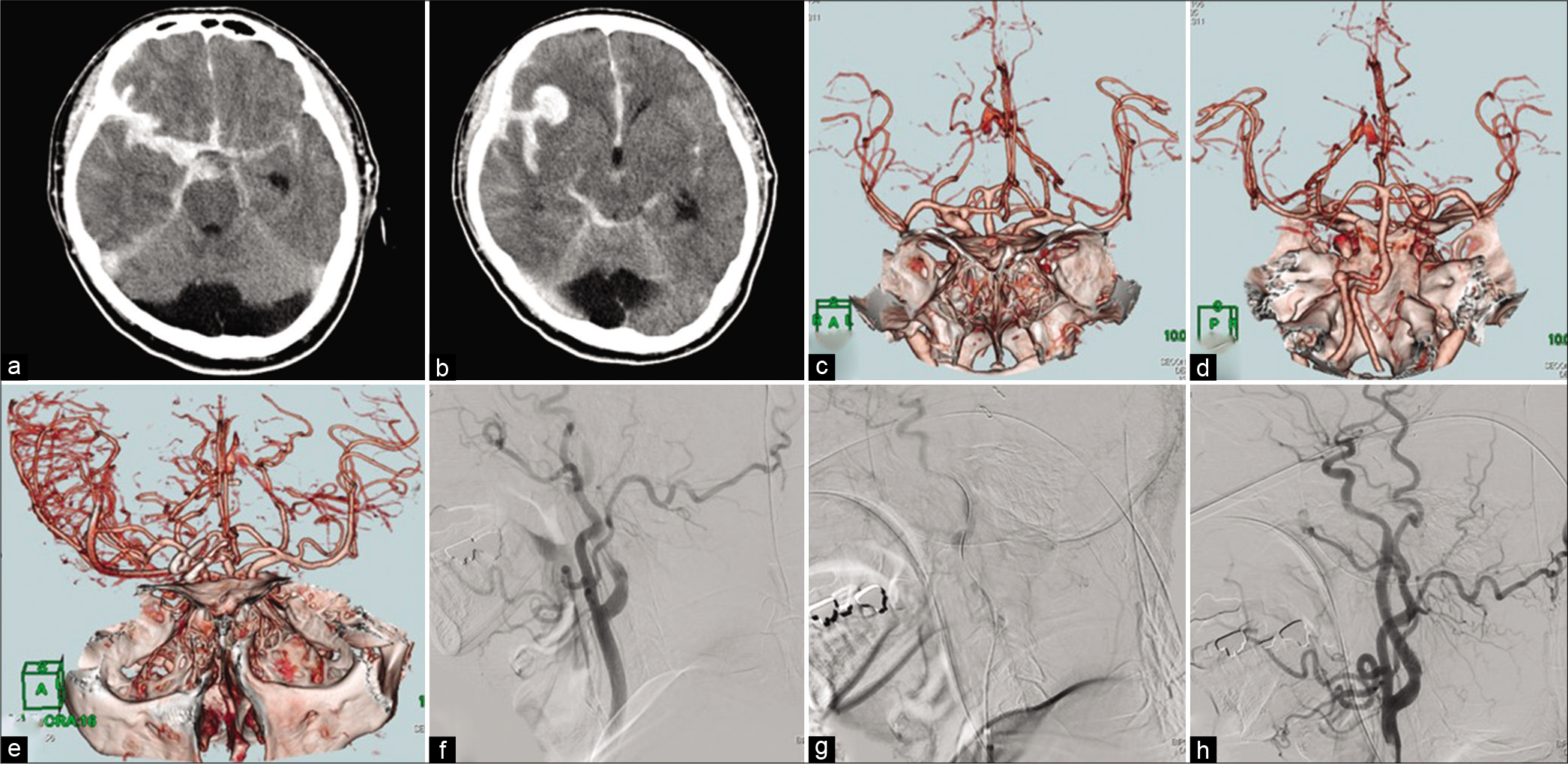T11/T12 ossification of the yellow ligament contributing to thoracic myelopathy in patient with posterior fossa arachnoid cyst and acquired incidental Chiari I malformation/syrinx
Date of publication: 31-May-2021
Background: Thoracic ossification of the yellow ligament (OYL) may contribute to myelopathy. In the case presented, the patient additionally had a chronic posterior fossa arachnoid cyst with an acquired Chiari I malformation and cervicothoracic syrinx.
Imaging features of perineural and perivascular spread in rapidly progressive rhino-orbital-cerebral mucormycosis: A case report and brief review of the literature
Date of publication: 31-May-2021
Background: Rhinocerebral mucormycosis (ROCM) is an opportunistic fungal infection originating from the paranasal sinuses with extension to the brain. A delayed diagnosis can rapidly result in a poor prognosis. ROCM commonly affects patients with diabetes or immunocompromised states with a variable progression.
Misdiagnosis of “White Cord Syndrome” following posterior cervical surgery for ossification of the posterior longitudinal ligament: A case report
Date of publication: 31-May-2021
Background: Following decompressive cervical surgery for significant spinal cord compression/myelopathy, patients may rarely develop the “White Cord Syndrome (WCS).” This acute postoperative reperfusion injury is characterized on T2W MRI images by an increased intramedullary cord signal. However, it is a diagnosis of exclusion, and WCS can only be invoked once all other etiologies for cord injury have been ruled out.
A rare case of neurosarcoidosis occurred only in the medulla oblongata mimicking malignant brain tumor
Date of publication: 31-May-2021
Background: Sarcoidosis is a multisystem disorder characterized by noncaseating epithelioid granulomas. However, neurosarcoidosis occurring only in the medulla oblongata is very rare and lacks specific imaging and clinical features. We report a rare case of neurosarcoidosis arising from the medulla oblongata alone, suggesting the significance of pathological findings for accurate diagnosis.
Review of best classification systems for diagnosing and treating thoracolumbar spine trauma
Date of publication: 31-May-2021
Background: Improved thoracolumbar spine trauma classification (TLSTC) systems can better help diagnose and treat thoracolumbar spine trauma (TLT). Here, we identified the types of injury (rationale and description), instability criteria, and treatment guidelines of TLSTC.
Intradural extension of mucocele secondary to giant frontal sinus osteoma: Diagnostic pitfalls
Date of publication: 31-May-2021
Background: Paranasal sinus osteoma in association with intracranial mucocele is a rare entity while intradural extension is even rarer. Our aim of presenting this case is to highlight the diagnostic pitfalls and reiterate the importance of prompt treatment of expected complications.
Thoracic spine schwannoma presenting with traumatic spinal cord injury: A case report
Date of publication: 31-May-2021
Background: The presentation of a thoracic spinal tumor due to high-impact trauma is quite rare and we found no other case reported.
Giant posterior mediastinal schwannoma requiring a thoracoabdominal approach for excision: Case report and literature review
Date of publication: 25-May-2021
Background: A schwannoma is a tumor of the peripheral nerve sheath. They are the most common benign tumor; presenting at any age, and at any site of the body and also one of the most common posterior mediastinal tumors. Posterior mediastinal schwannoma is usually identified incidentally in chest radiographs and with follow-up imaging such as CT scan. Large posterior mediastinal schwannoma usually presents with local symptoms. To confirm diagnosis and obtain local control, surgical excision is the usual approach.
A case of segmental arterial mediolysis with subarachnoid hemorrhage due to anterior cerebral artery dissection followed by internal carotid artery dissection
Date of publication: 25-May-2021
Background: Segmental arterial mediolysis (SAM) causes subarachnoid hemorrhage (SAH) due to intracranial aneurysm rupture and arterial dissection. We encountered a case of SAM-related SAH due to ruptured dissection of the A1 segment of the anterior cerebral artery concomitant with internal carotid artery (ICA) dissection.
Pediatric middle meningeal artery embolization for chronic subdural hematoma: A case report
Date of publication: 25-May-2021
Background: The most common neuroradiological finding in pediatric nonaccidental trauma (NAT) is subdural hematoma (SDH). Management options for pediatric SDH range from conservative clinical surveillance to craniotomy or decompressive craniectomy. The middle meningeal artery (MMA) indirectly feeds the hematoma; thus, MMA embolization is an alternative or adjunct to current surgical treatments in adults. Herein, we present, to the best of our knowledge, the first reported case of successful MMA embolization in a pediatric patient as an adjunct to current standard treatment for chronic SDH (cSDH).


